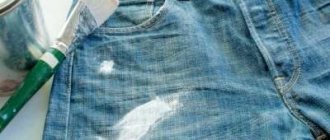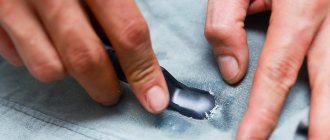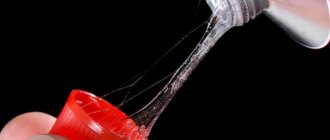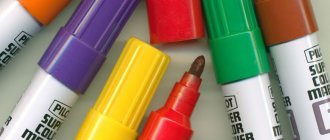It is no coincidence that stains from wood and epoxy resin are classified as difficult to remove stains. The sticky, viscous substance tightly glues the fibers of the material, and it seems that there is no way to remove the resin from clothing without leaving a mark. But don’t despair and throw your favorite jeans or jacket into the trash. There are many effective ways to get rid of tar stains at home. The choice of cleaning agent depends on the degree and duration of contamination, the type of resin and the composition of the material from which the affected clothing is made.
How to remove resin from different surfaces?
- A pleasant walk with the children in the forest, playing with the dog in the park, a family trip out of town or a lazy day in the garden: such relaxing ways to spend your free time may not be very pleasant, or rather they may lead to fresh stains, including from resin that is difficult to remove. from fabrics, cars or leather. Unpleasant consequences may remain after carrying out repairs, waterproofing work, or fixing a bathroom in a cottage, apartment or office space.
- When we notice tar dirt on our pants, sweater or other surface, the thought arises that it will remain there forever, and we will only have to throw away our favorite thing or take the car to a service center. Fortunately, this is just a misconception, a myth. The resin does not damage the structure of the material, so it can be cleaned, leaving virtually no traces of dirt. Stains can be removed without having to get rid of your favorite clothes or spend a decent amount of money on services to remove dirt from your car.
- You need to act immediately so that the substance does not have time to penetrate deep into the tissue. You only need to know a few useful facts and methods, which will be discussed below, and follow the advice given by ECU. For cleaning, you will need the chemical properties of substances that are found in every home.
Ice
When frozen, the resin loses its ductility and becomes brittle. The next method, extreme cooling, is based on this property.
- Place the tar-stained shirt in the freezer for 2-3 hours (preferably not in the fish compartment).
- You should first wrap the item in a plastic bag.
- After time has passed, clean the resin with a non-sharp object, such as a wooden spatula or spoon.
You should not take a thin blouse or lace underwear out into the cold, otherwise the stain will be rubbed off along with the piece of fabric. You can try wiping delicate items with a cocktail ice cube, but be careful.
Chemical composition and applications of resins
- Resin is a substance produced in some plants, especially conifers. It occurs in the intercellular spaces or resin ducts, and is produced by the surrounding secretory (resin-bearing) cells. Resin is used to protect the trunk and tree wounds. The color depends on the type of wood from which it was obtained.
- Resins are insoluble in water and are amorphous or partially crystalline mixtures of non-volatile organic compounds, terpenoids (resin acids and their derivatives) and phenolic compounds.
- Resin is extracted from living trees by resin selection (the process of obtaining a substance from trees by cutting off the bark and collecting the flowing liquid in special containers), from felled trees, branches, and pine needles. Resins have very different uses, depending on the specific type. Some are used in pharmacology in the form of drugs or ingredients for their production. The rest are used to produce natural rosin, shellac and turpentine. They are used to produce paints and varnishes.
- Resin is a raw material used in the production of cosmetics, plastics, undersea electrical cable insulation and many other products. In Siberia, the resin of these species of Siberian and Daurian larch is extracted for chewing and, according to methods, disinfects the oral cavity. Fossil resin (amber), widely used in jewelry.
Types of natural resins
- Balata from plants of the sapinaceae family.
- Baltic amber is a fossil resin from coniferous trees.
- Damara - from trees of the genus Lady shorea.
- Gutta-percha from plants of the saponidae family
- Hashish is the dried resin of cannabis inflorescences.
- Lacquer from lacquer trees.
- Myrrh from the embalmer's myrrh.
- Sandarak from trees of the cypress family.
- Pine resin from Scots pine
In industry and construction, synthetic resins are used. Their composition is completely different, unlike natural resins. These resins are used for waterproofing work, to protect surfaces from moisture. When laying and strengthening the foundations of buildings. When working in sanitary facilities. The floors and bottoms are coated to prevent moisture and leakage. Resins contain polymers, binders, hardeners (one of them, for example, diethylenediamine), as well as various fillers.
Security measures
- Protect yourself from getting chemical cleaners inside with a gauze mask.
- While performing cleansing actions, you should not drink or smoke.
- Do not use solvents with a pungent odor in a ventilated area.
- Apply strong medications only to the stain to be removed.
- To prevent the sticky mixture from spreading, clean from the edges to the center.
- After treatment, wash off the remnants of the drug used with soapy water.
Tools needed to remove tar and bitumen
- To quickly and effectively clean oil, tar, bitumen and liquid rubber, Antivandal Himitek is used. After using it, there are no oil stains or sharp, unpleasant odors. The time it takes for the composition to act is 15-30 minutes.
- The substance SSR Solvent Stain Remover is quite aggressive; when working with it, you will need protective gloves, glasses or a screen. It is applied to problem areas using a spray, and after 5 minutes the area is wiped and the active substance is washed off. The operation can be repeated several times, but keep an eye on how the fabric behaves (whether it deteriorates).
- Wurth HEK 5000 will remove resin from hard surfaces. Suitable for cleaning fabrics and removing resins of natural and synthetic origin.
- Do not forget to make sure that the chosen product will not discolor or damage the fabric - it is best to test a small amount of the product on an inconspicuous place. Be careful with delicate fabrics.
Preparing the spot cleansing area
Before you get rid of any remaining stains, you will need to do some prep work. Clean the product from dust and dirt with a regular clothes brush. The fact is that if, in addition to resin, there are other contaminants on the clothes, mud streaks may form when treated with chemicals.
After this, place the clothes on a flat board, which you have previously wrapped in white cotton cloth, folded in several layers. If the product has a lining, prop it up and insert a board between it and the facing fabric.
Moisten the material around the resin blot with water and sprinkle starch on top (talc can be used). This will create a barrier that will prevent the resin from spreading throughout the fabric after chemical treatment.
Equipment and devices for resin removal
- Truvox Kristal and PRIMASTER COMBI brushes will help remove large quantities of bulk stains from concrete, tiles and other hard surfaces. Together with the funds, they will quickly solve the problem.
- If the contamination is too large, the brushes may not cope with the task (or the process will take a lot of time). Rotors Karcher BDS 33/180 with Adv, Karcher BDS 43/Orbital C, Cleanfix R44-120 will come to the rescue. Orbital brushing machines PD 95A or Biltema can handle resin or bitumen stains well; they can be used to work in several directions (horizontal and vertical).
Traditional methods of dealing with resin
You need to start from the first method, moving down if the previous method did not help. You need to place a paper towel under the fabric with the stain to prevent it from spreading onto your clothes.
- Tea oil. It is safe for fabrics; apply the product with a cotton pad or shelf, covering the stain completely without touching the area around it. Send the item to the wash with a pre-soak to remove the oil stain.
- Vinegar. Mix it with water in a ratio of 1:3. Soak the area with the resin in the liquid and leave for half an hour. Wash or rinse, removing any remaining vinegar.
- Acetone, kerosene, and various paint thinners will also help in removing resin from hard surfaces. They can also be used to remove resin from fabrics. But an unpleasant odor may remain that cannot be removed by anything.
- Turpentine. Dilute with alcohol 1 to 3. Moisten a cotton pad with it and wipe the stain using a soft toothbrush, wait half an hour.
- Washing powder. Create a paste by mixing washing powder (not gel) with water 1 to 1. Apply to the problem area, after half an hour, rinse with water or wash the product as indicated on the label.
After washing, it is not advisable to use a dryer; too high a temperature can make the stain permanent. If the resin is still visible on the clothing, move on to testing the next method. Laundry soap will help remove any remaining oil.
Specialists from the Unified Cleaning Center company recommend using resin cleaning products in a combined form, in a complex, in order to quickly achieve the desired effect.
Preparing for cleaning
Having discovered a dark tar stain on the leg or sleeve of a blouse, the first thing you need to do is remember how it could have appeared. If trouble occurs after a walk in a park planted with coniferous trees, or while picking mushrooms in a pine forest, then we are talking about tree resin. It’s another matter if the stain appeared during repairs or after going to a construction site. In this case, we can assume that the resin is epoxy.
Resin type – wood (natural) or epoxy
There are two types of resins: natural, or wood, and synthetic. But they are all characterized by incredible stickiness, the ability to quickly penetrate the fabric fibers and glue them together.
Before cleaning begins, it is necessary to correctly determine the type of resin.
- Tree resin (tar) is a viscous, oily liquid of a dark brown color. It is formed as a result of the hardening of the sap of some trees. Resin is produced by pine trees, spruce trees, larches, poplar buds, thuja and other plants.
- Epoxy resin is a representative of synthetic substances, as it is produced chemically. Such resins are widely used in households, construction, and manufacturing. Epoxy exhibits its binding properties only when combined with a hardener and is resistant to acids and alkalis.
Vegetable stains are much easier to remove than stains caused by epoxy resin.
Fabric material
To select a cleaning product, it is important to know what fabric the stained jacket or blouse is made of. Otherwise, a hole may form in place of the stain, the paint may peel off, or some other problem may occur.
The composition of the material and methods of caring for the product are indicated on the label. If the information is erased or the label is cut off immediately after purchase, you should follow these rules:
- Wool and natural silk do not tolerate exposure to strong alkaline solutions. To clean the surface of these materials from resin, ammonia or a mixture of starch (1 tsp) and turpentine (5-6 drops) is used.
- Turpentine or acetone will help remove the viscous substance from cotton fabric When the resin has dissolved, wipe the contaminated area with alcohol and rinse with water.
- Acetate silk and bologna fabric are treated with purified gasoline. Acetic acid and acetone should not be used to process these materials.
- Nylon and nylon do not tolerate treatment with gasoline, benzene and alkaline solutions. Resin stains from these materials must be removed with warm water and laundry soap.
- Leather items cannot withstand exposure to solvents. For them, the best cleaning agent is vegetable oil.
- stained with wood resin can be easily cleaned with turpentine and ammonia, using them in equal quantities. Potato starch is added to the solution to obtain a thick paste, and the area of contamination is coated. After drying, the remaining paste is brushed off and the pants are washed.
- A jacket made of membrane fabric can be scrubbed using turpentine and laundry soap. Turpentine is diluted with water in a ratio of 1:2, grated soap is added to the mixture and the soiled part of the clothing is washed.
Fresh or old stain?
A fresh stain that has just appeared is always easier to remove than an old one. Therefore, as soon as a resin blot is discovered, you must immediately begin cleaning:
- Use a paper napkin or handkerchief to blot the resin, trying to collect a thick mass from the surface of the material.
- Do not wash, much less soak, the product. This will not help the matter; the stain will spread even more.
- If you don't have a stain remover on hand, you can try to get rid of the stain using vegetable oil. In case of failure, you will have to start processing with other substances suitable for the composition of the fabric.
Fresh stains usually have a blurred outline and are darker in color than the fabric. Old stains have a clear outline, they are lighter than the fabric, and appear both from the face and from the inside.
How to prepare things for stain removal?
Before applying the cleaning agent, the affected product must be prepared as follows:
- Shake out the dust and clean the surface of the clothing with a brush.
- Test the durability of the fabric in an inconspicuous area, such as a pocket or side inseam.
- Place the product on a table or floor and place a board wrapped in cotton material under the stain.
- If the product has a lining, it is peeled off in advance so that it is possible to place a board between the top and the lining fabric.
- The fabric around the stain is moistened with water. This will prevent the formation of divorces.
The product is ready for cleaning. Now all you have to do is choose the right tool - and you can get to work.
How to remove tar from skin?
- After cleaning resin from clothing, sticky parts of the substance may remain on your hands. To cleanse the skin, use vegetable oil for frying. Some people use coconut oil or peanut butter, for example, but it doesn't really matter which oil you choose. Apply a small amount to your hand, scrub vigorously, and wash your hands with regular soap.
- If you still have sticky traces of resin on your hair after dealing with stains, oil can also help. After applying to hair and massaging, wait about ten minutes and then comb the softened resin with a thick comb. After removing clumps, wash your hair with a clarifying shampoo.
Removing stains and odors after cleaning
Fabrics quickly absorb foreign odors, and solvents, turpentine and ammonia, which are proposed to be used to clean clothes, do not have an exquisite aroma. Therefore, the question arises of how to rid the product of an unpleasant odor after removing stains.
There are several ways to do this:
- Mustard powder is brewed with boiling water and stirred until a thick mass is obtained. When the mixture has cooled slightly, apply it to the problem area of the clothing, after which the product is washed. You can simply dissolve a little powder in a bowl of water and soak the item for several hours, then wash it.
- Dissolve half a bottle of hydrogen peroxide in 10 liters of water and soak the product for half an hour. This method is only suitable for white fabrics!
- To remove extraneous odors, you can soak clothes in a soda ash solution for half an hour, and then wash them in a machine, turning on the extra rinse mode.
- A special odor eliminator, such as DoctorWax or Antismel, can be purchased at a car dealership.
- When rinsing, use double the amount of conditioner.
If an unsightly tar stain appears on your favorite blouse or trousers, do not despair and throw the clothes in the trash. There are many ways to clean off dirt so that not a trace remains. The main thing is to choose the right product and carefully carry out the treatment.
How to remove tar from a car?
Substances such as tar, bitumen, asphalt, oil or paint dust cannot be removed from a car's paintwork by regular washing. To maintain the varnish in good condition, it is necessary to constantly remove all contaminants. Below is information on how to safely remove resin from your car. When it is not recommended to remove traces of resin from a painted surface yourself:
- when large stains of resin are visible on the surface of the car;
- if you are not confident in your actions;
- if the surface is not perfectly smooth, and resin and metal removers do not cope with contamination.
How to wash a child's hands
Children's skin is delicate and sensitive. It must be washed carefully, without using acid-containing preparations, fast-acting solvents (acetone, turpentine, gasoline), or washing powders.
You can remove tar from a child’s hands with vegetable oil, baby cream, or baking soda. Rub in with light movements without pressure, using a soft brush or foam sponge.
Technology for removing tar and bitumen from a car.
- The first step is to thoroughly wash your car at a self-service car wash or have it cleaned by professionals.
- Horizontal elements of the car are especially susceptible to the effects of resin; often the resin is not visible to the naked eye, so after washing the car you should make sure that the hood, roof, trunk door, front and rear windows are smooth and free of dirt.
- For cleaning the car body or some of its individual parts, we recommend professional and proven products Grass Antibitum, SSR Solvent Stain Remover, G502 Buz Point, Amway LOC and others.
- It is necessary to apply these compositions in doses to a cloth, sponge, microfiber, rub the chemical into the surface and dissolve. If the resin stain has a high density, then you can soak the dirt from a spray bottle to speed up the process of dissolving the stains.
- After applying the product, wait a few minutes until the resin stains dissolve. If the trace is large, you can reapply the drug after some time to speed up dissolution. When the resin has softened significantly, apply a small amount of the product to a microfiber or cotton pad, and then carefully remove the dirt. After removing the stain, rinse the area again. This is necessary to remove residual solvent.
- And never use rough or abrasive materials to remove resin, such as metal scrapers. They can damage the paintwork.
- Fresh stains must be removed immediately. Resin that remains on the surface of the vehicle for a very long time, exposed to high temperatures and changing weather conditions, can seriously damage the paintwork.
Old method - ammonia + turpentine
To prepare the mixture, you need to combine 1 tsp. ammonia with the same amount of turpentine and add 1 tbsp. l. starch.
- The resulting paste should be applied to the stain, trying to apply only the contaminated area.
- Wait a few hours and remove the dried mass from your clothes.
- After the operation, it is necessary to wash the cleaned item.











